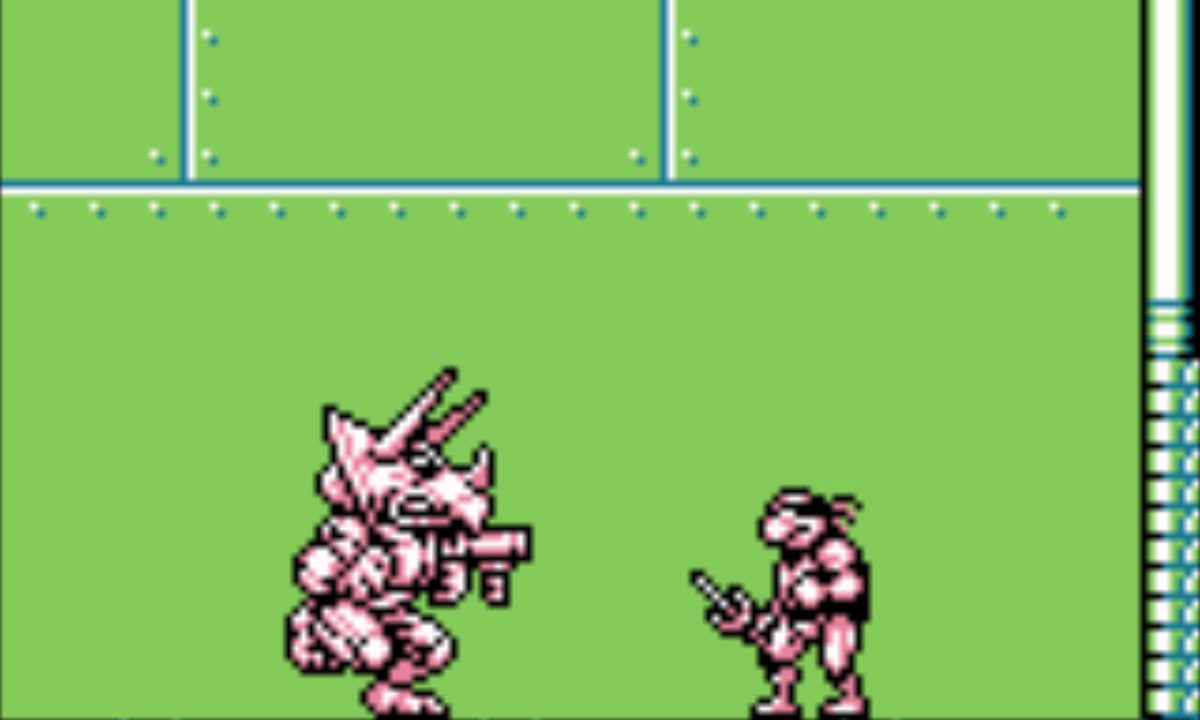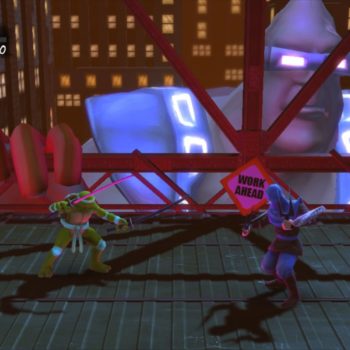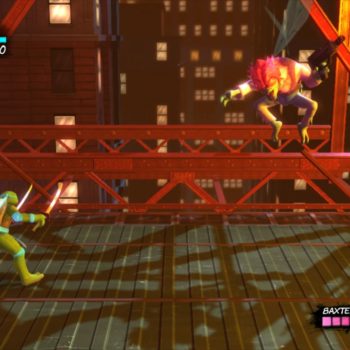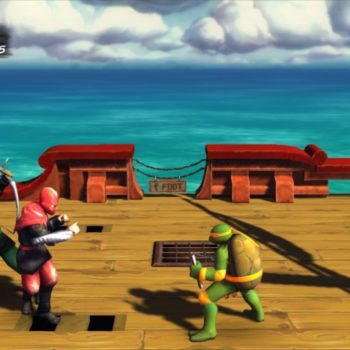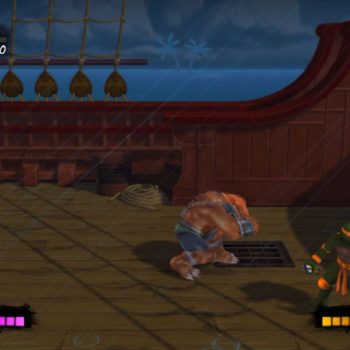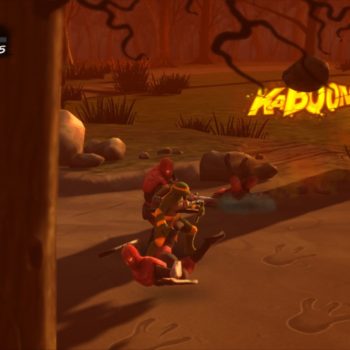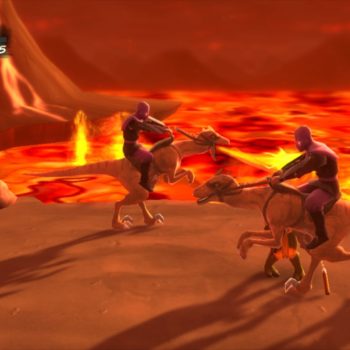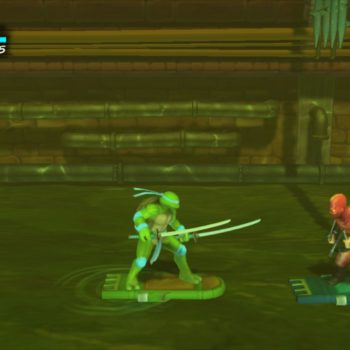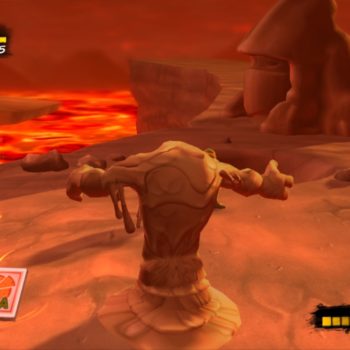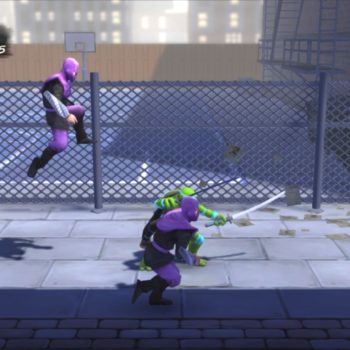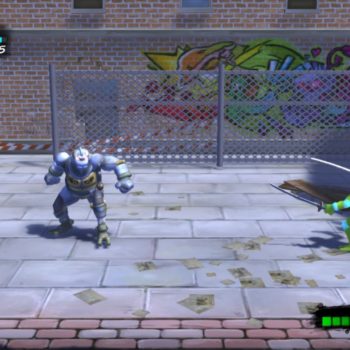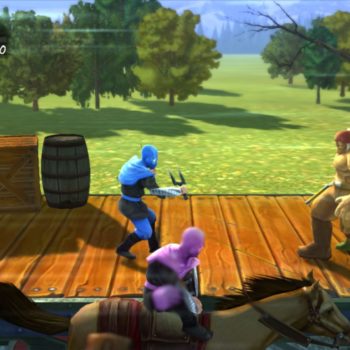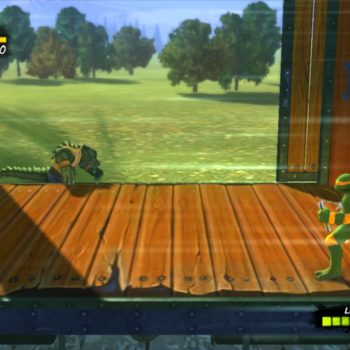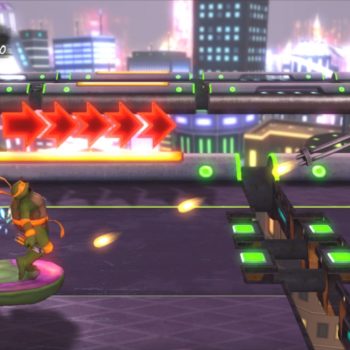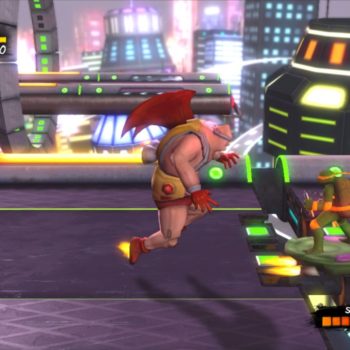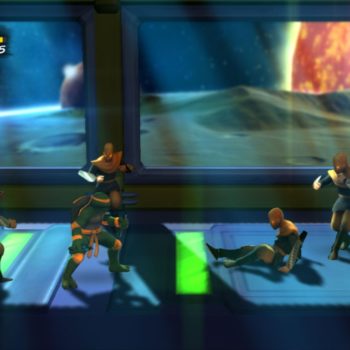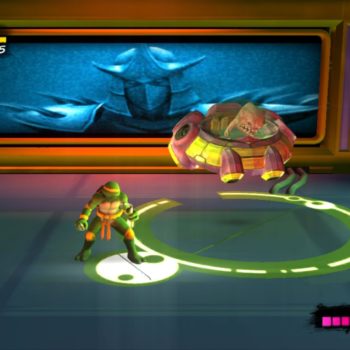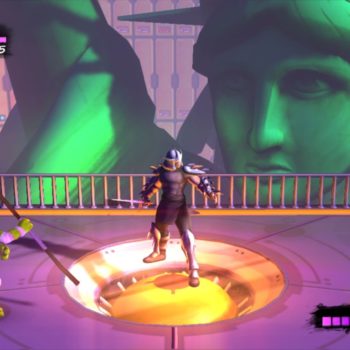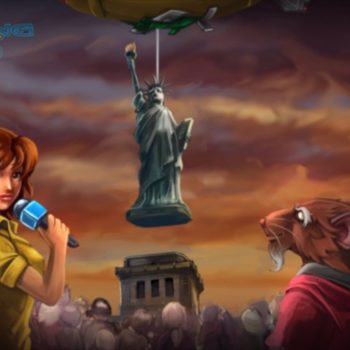Teenage Mutant Ninja Turtles III: Radical Rescue
With my recent luck in finding good to decent TMNT games, I continued my quest to play through all of the titles based on the series: which led me to Teenage Mutant Ninja Turtles III: Radical Rescue for Game Boy.
Let me tell you, I really struggled with how to review this game.
Rather than the beat’em up style I’ve become accustomed with in all of the other TMNT games released for this console, as well as the arcade, NES, SNES, and Sega Genesis, Konami went another direction and created a Metroidvania game.
That sounds really cool, right? I love the Turtles and I love Metroidvania games.
But somewhere along the line this game falls way short of the mark by reverting back to the stupidity that we found in the original TMNT 1 on NES. That is, horrible controls, bad collision detection, an endless slew of respawning enemies, near-impossible jumps, and deliberate traps that make me believe no one has ever beaten this game cleanly. (That is, without cheats.)
Much like the original NES game, retracing any steps within a board respawn enemies. That’s not so terrible when you go to the next screen within a level, but once you beat a “cleverly” placed enemy set as a trap, only to nudge the control a hair to the left/right and have it reappear, it becomes frustrating.
Otherwise the premise of the game is simple: you start as Michealangelo and have to save your other three turtle brothers before moving on to save Splinter and April. As you save a new turtle, each has a special ability to help you access other areas on the map you otherwise can’t get to.
All is well until you trek through much of the world map (which is just about useless) to find a dead end or realize that a key you need is all the way back where you came from: complete with respawning death traps.
Should you make it past the 4-5 bosses and rescue everyone save April, you are then taken through a horrible end of the game corridor of doom with shifting platforms, spikes, and enemies which are unavoidable.
Get past that and then you have to reface all of the previous bosses in succession before taking on the main boss, Shredder… who, after being defeated, respawns back to full health for a second round.
And if you get past all of that?
You have to make it through yet another death corridor before you can unlock the door April is held prisoner behind.
All of this leads me to believe I would’ve smashed this Game Boy cartridge to bits as a kid. Luckily, cheats and save states (highly necessary even with cheats enabled) allowed me to see just how stinky of a game this is. Unless you have a morbid curiosity for completion like I do, I’d avoid this game.
Teenage Mutant Ninja Turtles II: Back from the Sewers
The 1990’s were full of TMNT shovel ware. The Game Boy was the basic dumpster where these titles reside, aimed toward kids on the go with hardware that forced many games to be oversimplified graphically to fit on the small screen.
That’s a harsh representation of this game, which actually builds upon the original Fall of the Foot Clan by upgrading the graphics to an acceptable TV cartoon style.
The only problem is, your turtle has been made bigger on the screen which creates the usual collision detection issues seen in other games: in other words, you can die… a lot.
Of the three TMNT Game Boy titles, this one best represents Konami’s arcade theme used throughout other TMNT titles as well as Marvel Comics and The Simpsons based games. The ability to hang from certain ceiling structures, and move around on the level rather than side-scrolling as seen in the first game, are featured too.
Each turtle has their usual strengths/weaknesses based on range and speed of attack. If you die, the turtle is “captured” and you have the ability to get them back throughout the game. Otherwise you’re basically stuck with four lives and lots of cheap hits/areas as you’d expect that make the short game last a bit longer.
Your list of who’s who as it pertains to TMNT enemies are here: Foot Clan ninjas, mousers, etc. and the bosses are a good mix from the source cartoon show material including Bebop and Rocksteady, Baxter Stockman, General Traag, Granitor (The Stone Warrior), Krang, Shredder and Super Shredder.
I didn’t mind this game that much but could see where it would take a lot of practice to get to the end with your health/life intact. That’s more or less the status quo of 80’s and early 90’s games where cheap gameplay gimmicks are inserted to make the game more difficult: speaking of, there are difficulty settings to make the cheapness even more unfair!
Overall this game hasn’t aged too well and is only a must-play for completionists like myself. Otherwise it’s a fairly boring and uneventful entry into the series.
Teenage Mutant Ninja Turtles: Fall of the Foot Clan
One of the first games I ever owned for the original Game Boy, this TMNT version was light years ahead of the first NES game and way more faithful as a beat’em up in vein to arcade game.
Or was it?
Yes and no: that’s because of crude Game Boy graphics and being an early title. The turtles on the screen, as well as the enemies, were often too large in some cases, yet the difficulty of the game was easy enough where this didn’t hinder your progress.
There was also an ability to go back and rescue any turtles that were “captured”, that is, losing a life and having to choose one of the other four should you fail to defeat a board.
The game itself is short: there are only five bosses, but at least all of them are culled from the cartoon series unlike the original NES game. In fact, you actually get to fight Foot Clan soldiers as well, a big missing piece in that turd I hate on the NES too!
The game can be rather repetitive and while its short, there’s a small challenge involved if you happen to die and need to start over from scratch – which is about the only “difficulty” you may find playing this.
In all, you could skip this for one of the much more polished sequels that I’ll review soon.
Teenage Mutant Ninja Turtles: Turtles in Time Re-Shelled
It certainly feels strange acknowledging this as a “retro game”, however, it’s even stranger to think this game is already ten years old!
Is a decade long enough to call something “retro”? Well, it doesn’t matter, because this title was a modern-era remake of Konami’s classic second TMNT entry in the arcades: Turtles in Time. Of course, Turtles in Time also saw a famous console release on the Super Nintendo back in 1992. Then, it was considered one of the greatest beat’em up games and to this day still is.
The “Re-Shelled” entry takes that formula and cranks the volume knob until it twists off, complete with a totally redesigned, high definition presentation using the TMNT series’ style and voice actors at that time. The result is a trip down memory lane that feels like deja vu, but is far from being old hat.
As before you control one of the four turtles: unlike some of the other console editions, there doesn’t appear to be any advantage to using one of them over the other, meaning no special abilities for say, Donatello over Leonardo, in this one.
The game plays like the original: hoards of enemies fill the screen and it’s your job to defeat them. Many of the nice touches of the arcade game are still here, but none of the special SNES additions made the cut.
This is a pure remake of the arcade game only.
Regardless, it’s cool seeing the newer 2003 cartoon styles placed into the old environment. Oftentimes you’ll forget that the game is a remake, as many of the enhancements are enough to only bring back nostalgia in key spots.
If you’re a Turtles fan and haven’t played this, I highly recommend it. Especially if you were a fan of any of the Konami beat’em up games that were all the rage in the arcades throughout the early 90’s.
Teenage Mutant Ninja Turtles: The Hyperstone Heist
Where do I even begin with this game?
Anyone who has followed this site for some time knows my love of the TMNT arcade games. Those games were ported to home consoles as TMNT 2: The Arcade Game on the NES, and TMNT 4: Turtles in Time on the SNES. A third game mimicked the NES style port of TMNT 2 as well, titled TMNT 3: The Manhattan Project.
All of the titles were well-rounded beat’em up games which were faithful to the entire lore of the Teenage Mutant Ninja Turtles movies, cartoon, comic book and/or toy line… unlike the disaster which was the first NES TMNT game that was anything but!
With many developers have exclusivity rights to their games with Nintendo, it’s no surprise that none of those games appeared on the competing Sega Genesis – a console which was a rival of the Super Nintendo in throughout the 90’s. In order to get around contracts and licensing, developers would often re-release games under different titles, with slight modifications, on the Genesis.
Some of those modifications were often necessary due to the Genesis being a bit underpowered compared to the SNES hardware, yet a leap in a generation over the 8-bit NES.
It wasn’t until Mortal Kombat was released that games were published on multiple platforms, therefore, while the SNES got the arcade direct port of Turtles in Time (the arcade TMNT sequel and labeled “TMNT 4” on the console) Sega’s console would receive a modified version of the TMNT 4 game.
Being a fan of the series, more of these games should be a good thing, right? Well yes and no.
If you were a Genesis owner this was the only way you’d be able to play a TMNT beat’em up game and in that regard, it’s a solid title. The graphics and audio are truer to the arcade source material than the NES versions, but obviously inferior to the SNES TMNT 4 in almost every way imaginable. The Genesis lacked the same array of colors and the “Mode 7” motion graphics capabilities of the SNES, making Hyperstone Heist a flat, drab looking game at times. A stark comparison to the eyepopping visuals and colors of TMNT 4 on the competition.
After playing the other games, anyone would also note quite a few things which were ripped directly from the other two arcade titles. First, the levels look almost the same. In instances where they do not, color palettes were changed. There’s also an obvious limitation of on-screen enemies, so the game does not lag much like the NES version – and like its cousin, the Genesis title lengthens the game by sending extra waves of the same enemy groups multiple times before proceeding through the level.
That cheap shot isn’t bad enough when you get confused by the level layout. A decision was made to not end each section with a boss battle, rather, the turtles randomly move from sewer to above ground or otherwise, to stitch together a “level” between 2, 3, or 4 layouts which then end in a boss battle. For anyone who played the other games, the awkwardness feels like a glitch or mistake. I actually replayed the first few levels just to make sure it wasn’t!
Initially the game looks and feels like the arcade games, that is, until you start to play it. Everything that made TMNT 4 a classic feels watered down in Hyperstone Heist. It’s a shame too as the game released four months following the SNES release. There’s no way to throw enemies into the screen, for example.
Nearly every element is lifted from the other two arcade games with very little new content. The five levels mostly comprise chopped off and repetitive pieces from the other games, which feels particularly out of place when you’re on the pirate ship (rebranded “ghost ship”) but the stage was hundreds of years in the past in the arcade game. “The Gauntlet” stage changes the color theme of the previous cave, from the prehistoric levels of TMNT 4, to have a “blue” floor that the watery Pizza Monsters could jump out of. Even the sewer levels in the other games had a “floor” and a “water” path you could jump between, but in this game they are broken into two different areas using the same brick walls at the top and either a floor or water: not both.
The levels are also all linear: there’s no moving diagonally up/down through any of the levels and the only auto-scrolling stage is the Technodrome elevator borrowed from the SNES.
Worse than not facing many bosses, you actually face the same bosses over and over. Leatherhead returns from TMNT 3 and 4. Rocksteady is another boss, but Beebop isn’t in the game: a dubious omission when considering the addition of Leatherhead of him. The human form of Baxter Stockman flying his machine around also makes a brief appearance in “The Gauntlet” stage.
A new boss, Tatsu, fits the bill as a leader of the Foot Clan ninjas. He, along with “Shredder’s hideout”, are among the only “original” ideas in this game. And at that, Shredder’s hideout is largely comprised of rebadged pieces from an added level to the NES TMNT 2 port.
That’s where this game really falls down: both TMNT 2 and TMNT 4 were ports which also added more content in the home versions whereas Hyperstone Heist feels hastily thrown together. I’m not sure if it had to do with the Sega vs. Nintendo legalese or an actual hardware limitation, but the Genesis title feels also feels like an imitation.
The game ends by facing the three aforementioned bosses in succession once more before battling the arcade versions of Super Krang and Super Shredder. Truly the only non-recycled piece of the game is a portion of Shredder’s hideout.
I understand there’s only so much you can do within the confines of the TMNT license, such as “fight ninjas repeatedly” but when all of the other three games include such great use of the source material, plus add more to their home game brethren, it’s hard to give this title anything more than the thumbs in the middle. Heck, even TMNT 3 on the NES has a “credits” scene at the end which scrolled through the enemies (rather than stay on one graphic and scroll names).
I would’ve expected much more from a next-gen title… It plays like the other games and has fairly accurate visuals, but in the end it’s sorely lacking anything to make it stand out on its own.
Teenage Mutant Ninja Turtles IV: Turtles in Time
In a previous review I had mentioned that the TMNT arcade game is one of my all-time favorites. As a child growing up, the Saturday morning cartoon was life.
The arcade game because a quarter-sucker for me and a literal cartoon brought to life by the Konami game, with up to four players able to play. The graphics were accurate, the audio lifted soundbytes and music from the series and just about every aspect of the game was perfect, as a beat-em-up that had you destroying hundreds of on-screen ninjas by its completion.
Much of that was carried over in the NES port of that game, TMNT 2. Yet, the translation left something lacking, as the game’s visuals and audio were altered for the underpowered original Nintendo. It added more enemies and added two entirely new levels with new bosses to lengthen the game.
That was great, but it felt like something was still missing.
The true sequel to the arcade game, Turtles in Time, is labeled as TMNT 4 on the Nintendo platform due to a third game, The Manhattan Project, being released on the NES during the end of its life cycle. Oddly, and not in a bad way, TMNT 3 borrowed the entire platform of the TMNT 2 port, down to the visuals and game play, creating an entirely new game which was a direct sequel to the NES title but not the arcade one.
Adding to the awkwardness is the timing of the game’s releases: TMNT 3, which borrows elements from Turtles in Time, released after the arcade version and only six months before the arcade game was ported to the new Super Nintendo.
Unlike TMNT 2 and TMNT 3, TMNT 4 (Turtles in Time) is a faithful recreation of the arcade classic. Everything that was in the original arcade game is retained, along with newer visuals, music, stages, and bosses. The turtles have some additional moves, and the game, even with it’s quirky time travel stages, melds the cartoon, movies, and toy line in harmony.
Also, unlike TMNT 3, this game doesn’t appear to extend levels by adding additional waves of the same enemies like its siblings. There are newer palate swap foot clan ninjas of course, but the update in technology in the arcade, as well as the horsepower of the SNES port, are on full display here.
The visuals are nearly identical to the arcade game, whereas the NES clones are not. A few unnoticeable effects were removed because of playing on a console, much of the stutter and glitchy-ness of 2 and 3 are gone. The game plays smooth as butter both from an animation and control standpoint.
Like the TMNT 2 translation, other changes were made, in particular to the bosses. The evil mutant turtle Slash appears in place of Cement Man (a great decision I may add) while the game also adds the Rat King (a major secondary villain in the cartoon) as well as Beebop and Rocksteady, who were absent from the arcade version.
The arcade sequel also includes the “fly” version of Baxter Stockman, who originally only appears in human form in the original arcade version, but replaced playing against the duo of Beebop and Rocksteady simultaneously on the NES TMNT 2 port. Other bosses from TMNT lore include Metalhead (or “Chrome dome” as he’s known in other mediums), Leatherhead (who appears in TMNT 3 also) plus Tokka and Rahzar (from the second movie) round out much of the roster.
Some of the auto-scroll levels were changed to bonus stages, with a new Shredder “battle tank” boss battle was added at the end of new Technodrome level.
The game ends with a climactic battle against a mutated “Super Shredder” much in the same vein as the end of the TMNT 3 NES game.
Overall TMNT 4 is one of the gold standards of arcade ports on the SNES. It showed just how powerful a home console could be, at a time when arcades were starting to die. Any fan of the games, cartoon, toys and/or movies would be hard-pressed to not give this game a look.
Teenage Mutant Ninja Turtles III: The Manhattan Project
Well color me stupid. I never knew about this game, despite it being a pseudo-sequel to one of my favorite games of all time.
I used to play the heck out of the Teenage Mutant Ninja Turtles arcade game. As noted in a previous review, I had the NES port of this game, TMNT 2: The Arcade game, near the end of that console’s life cycle. It’s why I likely overlooked and/or missed this title years ago.
Don’t get me wrong, I knew there was a third TMNT game released, as the second arcade game was released for the SNES as TMNT 4: Turtles in Time. The problem is, I never knew this played near identical to the NES port!
Here’s why.
Turtles in Time actually released in the arcades before TMNT 3 came out on the NES. The SNES came out in August 1991, with Turtles in Time ported to the console a year later, in 1992.
TMNT 3 came out in February of 1992, as the NES started to be phased out. And seeing as it wasn’t the sequel we saw in the arcades, myself (and likely others) dismissed this as another cheap port/title much like TMNT 1.
However, that’s anything but the case. It does get repeptitve and a lot of the same concepts are reused from the NES arcade port, but it’s a brand-new game and worthy of being played. Basically, the devs took the arcade port engine from TMNT 2 and created new stages and bosses, plus added a few tweaks with moves and different style foot clan ninjas.
The result is TMNT 2.5 so to speak.
That doesn’t make the game a cheap imitation. In fact, you can tell that the developers cranked as much out of the Nintendo hardware as possible with this game. The graphics are sharp, the sound is great and if not for Turtles in Time, this may be the gold standard for the Konami beat’em up games such as TMNT, X-Men, and The Simpsons.
The only place where this game does go wrong is the same faults of TMNT 2: an endless barrage of ninjas sometimes makes you feel you’re stuck on the same “screen” for long periods of time rather than the arcade’s natural flow/progression. The idea, as I surmise, was to get more value out of playing the game longer. It was easier to continue adding ninjas to the screen as you beat them than have you walk through the level.
That adds a new dynamic where you are “pulled to the left” as you clear a “screen”. I love the idea and it helps you to know when to continue moving.
The turtles still retain their moves as well as a throw and a special move that depletes your life bar. The ninjas are also a bit harder to beat, with the jump-kick move being practically neutered in this game. (It’s an essential, higher-power move to pull of in the arcade versions.)
Yet, the result is a fun game featuring TMNT bosses not seen in other iterations of the game such as Dirtbag and Groundchuck. Movie enemies Tokka and Rahzar, as well as Super Shredder and cartoon/toy enemies Leatherhead and Slash all appear in this game as well as Turtles in Time.
In all it’s a fun addition to the series, bridging the demand for a TMNT 2 NES sequel with that of its big brother sequel Turtles in Time. I really enjoyed it and think any fan of the series would too.
Teenage Mutant Ninja Turtles II: The Arcade Game
The NES port of one of, if not my favorite all-time arcade game is this one.
Now for the surprising news: I didn’t own this game until the NES was practically collecting dust. I received a handful of NES games well after I owned my SNES, probably because the games were cheap then. A near pristine version of this cartridge now sits in storage and honestly that’s where it was for awhile even after acquiring it.
I had played this game so much in the arcades that my desire to play it at home was practically nil. Imagine my surprise that many years later I would return to it and thoroughly enjoy the home console 8-bit translation.
First the basics: this is a beat’em up game, which in the arcades, was designed to make you blow through quarters rather quickly. Some of the cheap death stuff was altered for the home version, with a life bar at the bottom. The controls feature a jump and an attack button. You can combine the jump into a jumping diagonal kick that is fairly useful throughout the game and appears to do more damage than your regular attack.
The game is fairly straightforward. It was named TMNT 2 due to the original TMNT produced prior for the NES: a turd of a game that was missing many of the main characters and the charm of this cult classic. While the graphics are altered and more cartoonish in this 8-bit translation, I found that most of the concessions to work with the NES hardware weren’t just slapped onto the box. Sprits that were reduced in size, including the turtles themselves, just simply “work” within the environment.
Just about everything is redrawn, however, giving the game a bit of a different feel than the arcade version. However, the controls are tight and the gameplay is nearly spot-on. Even the timing of some events throughout the levels is identical or felt like it as to the game I came to play quarter-by-dollar-sucking-quarter.
Only a few things changed for the NES version. Baxter Stockman, a villain in human form only in the arcade, appears as “The Fly” in the home version replacing end bosses Beebop and Rocksteady: you still play against each of Shredder’s henchmen, but individually in earlier stages. Where The Fly is the boss now, you would’ve instead played against both henchmen in the arcade as it had a four-player co-op mode.
One stage is extended with a snow level in the city and one of the game’s two original bosses made only for this NES port. Another is like a Japanese-dojo level with a Samurai boss who has a levitating head.
I’m still unsure whether I like these additions. They give the NES game lasting appeal by not being as short of a game, which occurs as the difficulty and cheapness of dying are toned down compared with the arcade. Even the final encounter with Shredder, where he clones himself, is pared down from “3 Shredders” to 2 on NES: his insta-kill ray gun was also a no-show.
Yet one thing that’s really important is that the game is faithful to source material. That was my issue with the first TMNT. All of the bosses, including your never-ending run of minions in arcade version, and even The Fly for that matter, were (mostly) cartoon episode staples. From the Foot Clan ninjas to the mousers, it sure beat the first game’s “frog man” or “fire man” that were sorely out of place.
However, in this game, the polar bear or whatever ice creature boss and the samurai boss take away from that: reminding you of all of the awful and fake creations for the terrible TMNT 1 game… which lacks foot soldiers whatsoever, while this game has palette swap ninjas out the wazoo! That’s unacceptable considering how much source material is available from the cartoons, movies, and comic books, as well as the huge toy line.
I’d even venture to guess that the sound and graphics were fairly cutting edge for its time. This game even features heavy “Pizza Hut” advertising too. Packaged with the ability to actually play “the cartoon” with a game true in both feel and concept, this game lives on in re-releases even to this day as one of the greatest of all-time.
In all this is a port of a great game which is pared down in ways that it enhanced it for the home. I highly recommend it for anyone looking for an hour or two to burn one evening.
Teenage Mutant Ninja Turtles
Ask anyone who grew up with this game as a kid about it, and the likely reaction is repressed feelings and nightmares.
Unlike it’s (far) superior arcade cousin, the first TMNT game on the NES was a total disaster. Most of the non-boss enemies were not taken from the cartoon or comics, completely ripped out of nowhere. That would be so bad if the collision detection and controls weren’t horrid.
Some of the regular bosses took multiple hits to kill – and they would respawn soon as you went back in a stage, something which is vital on many of the boards. Worse, some of the bosses had second variations where they’d die and then something would float around the screen waiting to be killed. You could not duck or dodge from many of them, resulting in death.
Oh yeah, you can choose between each of the four turtles to play with, but once one died, that was it – unless you braved rescuing one in the scant few areas you can do so in the game.
Then of those four turtles, those with the shorter weapons (especially Raphael) were useless because you couldn’t get close enough to an enemy to hit them, resulting in damage (and more death).
Adding to the frustration are areas which require a precise jump despite imprecise controls and respawned enemies, resulting in you falling and starting over. And if that’s not enough, the frame rate drops to stuttering slow and unresponsive when there are too many enemies on the screen at once!
Then there’s a stage where the boss isn’t always in the same location, causing more backtracking through frustratingly difficult areas.
If you can make it to the final battle with Shredder, a feat in and of itself, he can instantly kill you with his ray gun.
When anyone brings up hard games of my childhood, this is among the top of the list. If you’re brave enough to try it, use save states and cheats – or else “say your prayers Turtles!”
